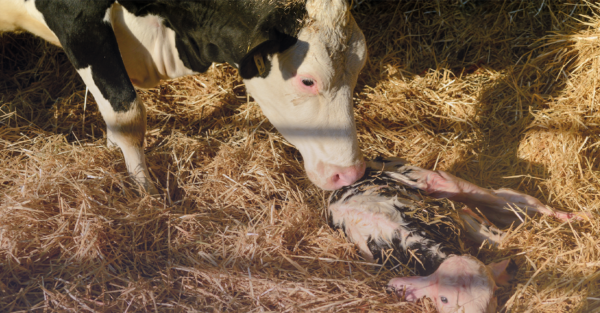Blog | Reading Time 3 minutes
Notts dairy farmer uses a quality inoculant to improve the value of slurry

Nottinghamshire dairy farmer Graham Walker has seen the nutrient value of his slurry improve, and the smell reduce, after using the slurry inoculant, SlurriN PRO.
As herd manager on the 550-acre Collingthwaite Farm on the Welbeck Estate, Mr Walker aims to make the most from the slurry he has available to reduce bought-in fertiliser requirements.
He explains that he introduced this inoculant because he wanted to get more nutrition from the slurry and to reduce greenhouse gas emissions.
In this blog, Mr Walker explains the benefits he’s seen from using SlurriN PRO.
Farm facts
- 450 acre farm on the Welbeck Estate in Nottinghamshire
- 250 cow herd of autumn block-calving Holstein Friesians
- Herd milked twice a day through a herringbone parlour
- Average annual milk yields of 10,200 litres per cow at 4.45% fat and 3.55% protein
- Majority of milk sold to First Milk on a manufacturing contract
- Other milk used to make the award-winning Stichelton cheese and to supply milk for a raw milk vending machine in the estate’s farm shop
- Minimal fertiliser used on the farm
How to maximise the value of slurry
Mr Walker says slurry is key to producing as much forage and grazing grass as possible, with the farm introducing the SlurriN PRO inoculant last October.
No bought in fertiliser is applied to the grazing ground and as little as possible is applied on the silage grass.
The slurry is spread on the farm from early March onwards using an umbilical system and great care is taken to ensure its quality is retained.
There is a floating sheet on the slurry lagoon to keep the rainwater out, and the slurry is pumped underground from the lagoon to come up through hydrants in the fields for spreading.
Mr Walker has used Lallemand Animal Nutrition’s slurry inoculant, SlurriN PRO, for one housing season at a rate of one 1kg sachet per 100 cows per month.
He says the inoculant has reduced the smell of the slurry and data shows it has greatly improved its nutrient value, while the inoculant’s impact on the farm’s emissions has yet to be determined.
Analysis shows the inoculant has increased the nutrient values:
-Phosphorus has improved from 123 mg/kg to 367 mg/kg
-Potassium has improved from 1,656mg/kg to 1,819mg/kg
-Nitrogen has improved from 0.12% w/w to 0.23% w/w
He says the nutritional improvements to the slurry have been key to producing as much forage and grazing grass as possible for the herd.
What is SlurriN PRO and how does it work?
As a slurry inoculant, SlurriN PRO offers both production and environmental benefits to farmers.
Lientjie Colahan, environmental product manager at Lallemand Animal Nutrition, explains how it works.
The inoculant contains a highly concentrated combination of enzymes and bacteria that promote the development of beneficial microorganisms in slurry.
The inoculant is simple to use, and the recommended dosage is one 1kg sachet per 200,000 litres of slurry, which equates to around a month’s slurry production from 100 cows.
The powder should be dissolved in 10 litres or more of clean tepid water and then mixed evenly into the liquid fraction of the slurry every month.
By treating slurry with a biological inoculant, farmers will not only increase the total amount of N in the slurry, but also increase the proportion of organic N present.
This delivers environmental benefits because organic N is not volatile or leachable, meaning ammonia emissions from the slurry are reduced.
The benefits of using a slurry inoculant are two-fold for farmers, with the enhanced value of slurry having the potential to reduce input costs as well as ammonia emissions.
Published Sep 25, 2023 | Updated Dec 4, 2023
Related articles
Need specific information?
Talk to an expert


